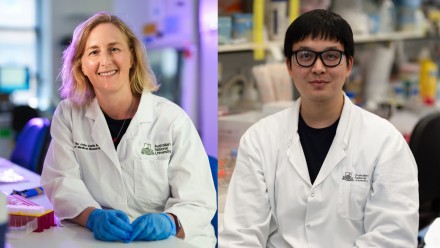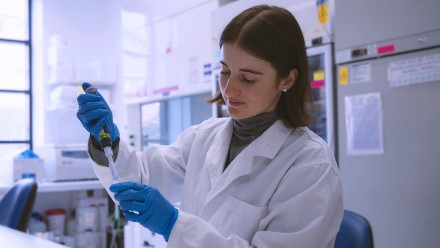Professor Ted (Teddy) Maddess

Contacts
Ted did his undergraduate degree at the University of British Columbia where he became fascinated with the diverse optical designs of eyes. In 1981 he came to the then Research School of Biological Sciences (now part of RSB) at the ANU to do a PhD on insect vision but finished up working on nonlinear adaptive mechanisms in mammalian visual cortex. Ted then briefly moved to the John Curtin School of Medical Research to carry on with the cortical work but instead exploited a retinal adaptation mechanism to invent a new stimulus for mapping the visual fields (perimetry) for diseases like glaucoma. The resulting patents are used in the FDT and Matrix perimeters. That work caused Ted to work more on human vision in health and disease. In late 2012 his group moved to the new Clinical Suite of the ANU Eccles Institute for Neuroscience (EIN) at the John Curtin School of Medical Research. Ted is the recent past Director of a national research body: the ARC Vision Centre.
Research interests
My initial interest in the optical designs of invertebrate eyes led me to examine how visual systems squeeze real-time visual information into brains of very limited information capacity. My subsequent research into adaptive neural processing has lead to new glaucoma detection devices, the FDT and Matrix Perimeters, now being marketed by Carl Zeiss Meditec. Drs Corinne Carle, Josh van Kleef, Faran Sabeti and I are now extending that work to provide objective non-contact perimetry using multifocal pupillography. The platform is now called the objectiveFIELD and is being developed with Konan Medical USA. The objectiveFIELD has been shown to have value in Glaucoma, Diabetic Retinopathy, Macular Degeneration and Multiple Sclerosis. Other recent work includes the adaptive dynamics of following eye movements; the processing of texture, and brightness; and methods for diagnosing neurological disorders.
Groups
Projects
- Supervisor, Characterising 3D image structure
- Supervisor, Higher order image statistics and image texture
- Supervisor, Multifocal pupillographic objective perimetry
- Supervisor, The spatial frequency doubling illusion











